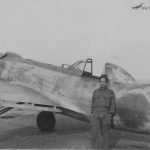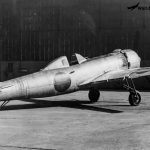Tsurugi at Yokota Air Base
Yokota Air Base
Yokota Air Base
“Tsurugi” Kamikaze Aircraft 1945
Tsurugi and Ki-84 Iwate
Captured Ki-115 Tsurugi
Yokota Air Base 1940′
Ki-115
Kamikaze aircraft Ki-115
Ki-115
Ki-115
The Japanese command realized that sooner or later there would be an American invasion of the Japanese home islands. Preparations for defense were begun. All capable aircraft were to be used for suicide attacks against the invasion fleet. However, it turned out that the Japanese army had too few machines. On January 20, 1945, Nakajima was awarded a contract to develop a single-use aircraft that would be easy to manufacture, operate and fly. Work began in cooperation with the Mitaka Research Institute. The chief designer of the machine was Eng. Kunihiro Aoki of the Nakajima company. The construction of the first prototype Ki-115.01, was completed in March 1945. They immediately proceeded to flight tests, which initially failed. The reason was that the wing area was too small and there were no flaps. The landing gear, which lacked brakes and shock absorption, was also a problem. In June 1945, the prototype was fitted with simplified flaps and landing gear damping. The aircraft so rebuilt underwent flight tests and went into production. 104 of them were built, in the Ki-115 Ko version. None of them were used in combat. There were also plans to produce the Ki-115 Otsu version. It had a larger wing area and normal flaps. The cockpit was located differently in it. The project was not realized due to the end of the war. The design was not known to US intelligence at all. It was not assigned a code designation.










